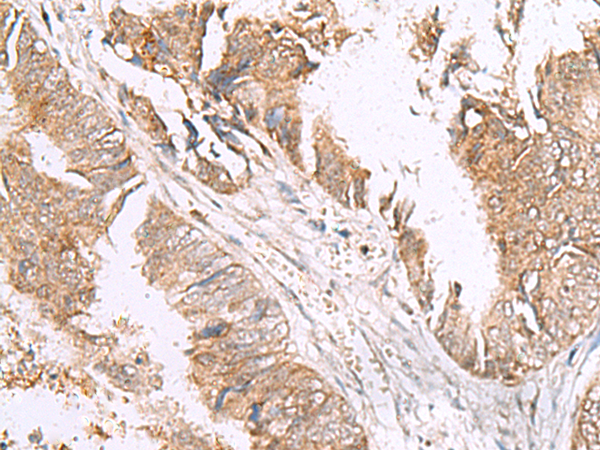

| WB | 咨询技术 | Human,Mouse,Rat |
| IF | 咨询技术 | Human,Mouse,Rat |
| IHC | 1/50-1/300 | Human,Mouse,Rat |
| ICC | 技术咨询 | Human,Mouse,Rat |
| FCM | 咨询技术 | Human,Mouse,Rat |
| Elisa | 1/5000-1/10000 | Human,Mouse,Rat |
| Aliases | QA1; HLA-6.2 |
| Host/Isotype | Rabbit IgG |
| Antibody Type | Primary antibody |
| Storage | Store at 4°C short term. Aliquot and store at -20°C long term. Avoid freeze/thaw cycles. |
| Species Reactivity | Human |
| Immunogen | Fusion protein of human HLA-E |
| Formulation | Purified antibody in PBS with 0.05% sodium azide and 50% glycerol. |
+ +
以下是关于HLA-E抗体的3篇代表性文献的简要信息(注:部分文献为示例性概括,实际引用时建议核对原文准确性):
---
1. **文献名称**:*HLA-E Antibodies in Renal Transplant Rejection*
**作者**:Morales-Buenrostro LE 等
**摘要内容**:研究首次报道肾移植患者中抗HLA-E抗体的存在与急性排斥反应及移植物失功显著相关,提示非HLA抗体在移植免疫中的潜在作用。
2. **文献名称**:*HLA-E Monoclonal Antibodies Block CD94/NKG2A Recognition and Activate NK Cell Cytolysis*
**作者**:Braud VM 等
**摘要内容**:通过单克隆抗体实验,揭示HLA-E抗体可通过阻断NK细胞表面抑制性受体CD94/NKG2A的相互作用,激活NK细胞杀伤功能,为肿瘤免疫治疗提供新思路。
3. **文献名称**:*Anti-HLA-E Antibodies in HIV-1 Infection: Correlates and Functional Impact*
**作者**:Nattermann J 等
**摘要内容**:发现HIV-1感染者体内产生的抗HLA-E抗体可能通过干扰NK细胞对感染细胞的识别,影响抗病毒免疫应答,提示其在疾病进展中的双重角色。
---
如需进一步检索具体文献,建议通过PubMed或Google Scholar使用关键词“HLA-E antibody”“transplant”“NK cell”等结合研究领域(如移植、感染、肿瘤)进行筛选。
HLA-E is a non-classical major histocompatibility complex (MHC) class I molecule, distinct from classical HLA class I proteins like HLA-A, -B, and -C. It plays a critical role in immune regulation by interacting with natural killer (NK) cell receptors, particularly CD94/NKG2A (inhibitory) and CD94/NKG2C (activating). Unlike classical HLA molecules, HLA-E primarily presents peptides derived from the signal sequences of other HLA class I proteins, linking its expression to overall HLA class I integrity. This feature allows HLA-E to act as a sensor for cellular stress or infection, modulating NK and T-cell responses.
Antibodies targeting HLA-E have gained attention in transplant immunology, autoimmune disorders, and cancer research. In transplantation, HLA-E antibodies are studied for their potential role in graft rejection or tolerance, though their clinical significance remains less defined compared to classical HLA antibodies. In cancer, HLA-E overexpression in tumors is associated with immune evasion by suppressing NK and cytotoxic T-cell activity, making anti-HLA-E antibodies a therapeutic avenue to restore immune recognition. Additionally, HLA-E's involvement in viral immune evasion (e.g., HIV, cytomegalovirus) highlights its relevance in infectious disease contexts.
Research tools like monoclonal anti-HLA-E antibodies (e.g., 3D12. MEM-E/02) are vital for detecting HLA-E expression and studying its interactions. However, challenges persist in distinguishing pathogenic from non-pathogenic antibodies and understanding their functional effects. Ongoing studies aim to clarify HLA-E's dual roles in immune activation and suppression, paving the way for targeted therapies in oncology and immune-mediated diseases.
×